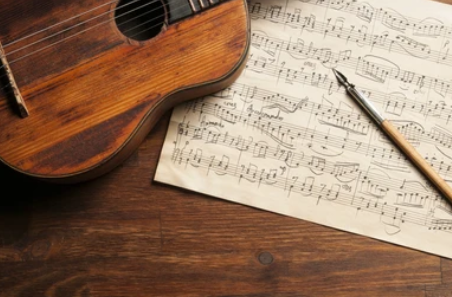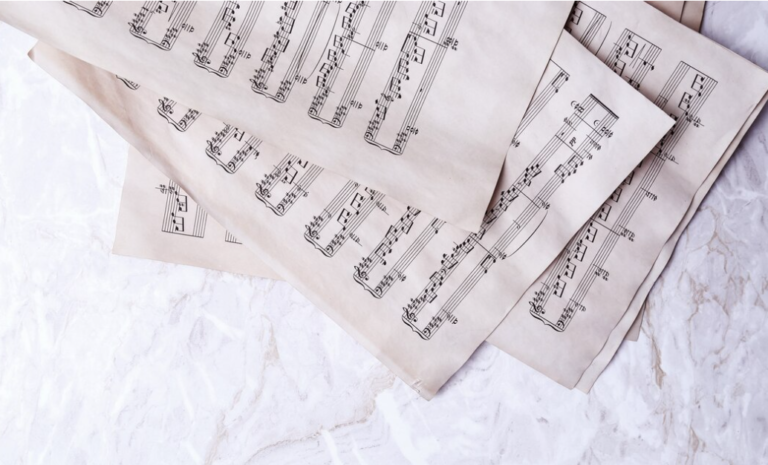Easy Guide – How To Play the D Blues Scale On Guitar

Welcome back, fellow guitar enthusiasts! Today, we’re diving into the world of blues, focusing on one of the most iconic and expressive scales: the D Blues Scale. Whether you’re a beginner or looking to expand your soloing chops, understanding and mastering this scale will add a soulful touch to your playing.
What is the Blues Scale?
The Blues Scale is a variation of the minor pentatonic scale with an added “blue note.” This note creates the signature bluesy sound, full of emotion and depth. The D Blues Scale consists of the following notes:
D – F – G – G# – A – C
Why Learn the D Blues Scale?
Learning the D Blues Scale offers several benefits:
- Improvisation: The scale is perfect for improvising over blues progressions and many rock and jazz tunes.
- Expressiveness: The added blue note provides a unique color, allowing you to convey a wide range of emotions.
- Versatility: Once you master it in one key, you can easily transpose it to others.
How to Play the D Blues Scale
Let’s break down the D Blues Scale in different positions on the guitar neck.
10th Position
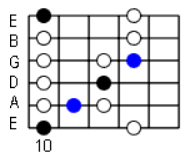
- Start at the 10th Fret on the Low E String (6th String): Place your index finger on the 10th fret (D note). Place your ring finger on the 13th fret (F note).
- Move to the A String (5th String): Place your index finger on the 10th fret (G note). Place your middle finger on the 11th fret (G# note). Place your ring finger on the 12th fret (A note).
- Move to the D String (4th String): Place your index finger on the 10th fret (C note). Place your ring finger on the 12th fret (D note).
- Move to the G String (3rd String): Place your index finger on the 10th fret (F note). Place your ring finger on the 12th fret (G note).
- Move to the B String (2nd String): Place your index finger on the 10th fret (A note). Place your ring finger on the 13th fret (C note).
- Move to the High E String (1st String): Place your index finger on the 10th fret (D note). Place your ring finger on the 13th fret (F note).
12th Position
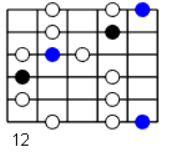
- Start at the 12th Fret on the Low E String (6th String): Place your index finger on the 10th fret (D note). Place your pinky finger on the 15th fret (A note).
- Move to the A String (5th String): Place your index finger on the 12th fret (E note). Place your middle finger on the 13th fret (F note). Place your pinky finger on the 15th fret (G note).
- Move to the D String (4th String): Place your index finger on the 12th fret (A note). Place your middle finger on the 13th fret (B flat note). Place your pinky finger on the 15th fret (C note).
- Move to the G String (3rd String): Place your index finger on the 12th fret (D note). Place your pinky finger on the 15th fret (F note).
- Move to the B String (2nd String): Place your index finger on the 13th fret (G note). Place your pinky finger on the 15th fret (A note).
- Move to the High E String (1st String): Place your index finger on the 12th fret (D note). Place your pinky finger on the 15th fret (F note).
5th Position
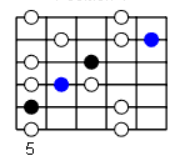
- Start at the 5th Fret on the Low E String (6th String): Place your index finger on the 5th fret (A note). Place your pinky finger on the 8th fret (C note).
- Move to the A String (5th String): Place your index finger on the 5th fret (D note). Place your ring finger on the 7th fret (E note).
- Move to the D String (4th String): Place your index finger on the 5th fret (G note). Place your middle finger on the 6th fret (G# note). Place your ring finger on the 7th fret (A note).
- Move to the G String (3rd String): Place your index finger on the 5th fret (C note). Place your ring finger on the 7th fret (D note).
- Move to the B String (2nd String): Place your index finger on the 6th fret (F note). Place your pinky finger on the 8th fret (G note).
- Move to the High E String (1st String): Place your index finger on the 5th fret (A note). Place your ring finger on the 8th fret (C note).
Tips for Practicing the D Blues Scale
- Start Slow: Focus on accuracy and clarity before increasing your speed.
- Use a Metronome: This will help you stay on time and improve your rhythm.
- Improvise: Experiment with creating your own licks and phrases using the scale.
- Combine Positions: Move between different positions to create more dynamic solos.
- Listen to Blues Legends: Study the playing of great blues guitarists like B.B. King, Stevie Ray Vaughan, and Eric Clapton to understand how they use the blues scale.
If you’re interested in learning an instrument, at Real Brave, we offer an incredible experience like no other place in music lessons for kids and adults by guiding them from the beginning stages of getting to know an instrument all the way through performing for family and friends on stage. Our instructors come from all over the world, bringing extensive experience on a wide range of instruments. Click below and book a free lesson with us!
Author: Daniel Powers Jr, the founder of Real Brave™, serves as the chief inspiration to thousands of students in the Real Brave music instruction program. He’s also the visionary behind PracticePad™, an online platform for live one-on-one online music lessons, lesson tracking, and scheduling. Beyond his entrepreneurial pursuits, Daniel leads a non-profit organization that provides formerly homeless children with access to music education, making a profound impact on their lives. His unwavering dedication to music, innovation, and education continues to inspire individuals to reach their fullest potential while creating positive change in communities. Follow Real Brave on all the socials:
youtube.com/@realbraveinc
twitter.com/realbraveinc
https://www.tiktok.com/@realbraveinc
instagram.com/realbraveaudio
facebook.com/realbraveinc




